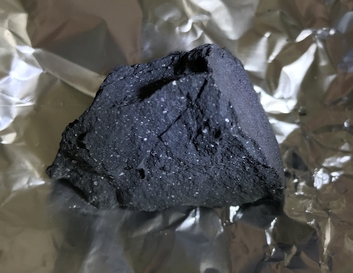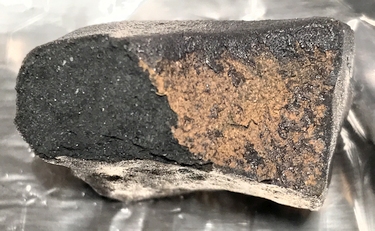
A first carbonaceous chondrite find for the UK
Following the meteor that blazed a trail across southern England on the evening of Sunday, 28th February, UK researchers have recovered fragments of meteorite from Winchcombe and the surrounding area. Dr Richard Greenwood, a meteorite researcher at the Open University, was first on the scene to verify one piece of the meteorite that smashed into a resident’s driveway.

He was thrilled when he realized that the meteorite is a rare carbonaceous chondrite – in fact, the UK’s first known fall of this type of meteorite. Further fragments have now been found in the area, their rapid recovery ensuring that these exceptional samples have suffered minimal degradation.
The location of the meteorite was pinpointed by specialized cameras and spotters across the country, part of a citizen science network called UKFAll that was set up for exactly this purpose. Data from this network allowed the meteor’s flight path to be recreated, helping scientists not only to predict where it fell, but also to determine its exact point of origin within the asteroid belt.

with fusion crust and dark interior
Carbonaceous chondrites are the most primitive materials in our solar system, representing the stuff that planets are made of: a melange of minerals and organic compounds – including amino acids. Their unique composition potentially carries important information on the earliest origins of water and the basic ingredients for life.
There are three carbonaceous chondrites in the Europlanet Collection of the Virtual Microscope, so you can explore the textures and mineralogy of this rare class of meteorite. One of these meteorites, Allende, has been called ‘the best studied meteorite in history’ and contains microscopic diamonds that pre-date the solar system. The other examples are Dar al Gani 847, found in Libya, and Lancé, which fell in France in 1872. And who knows? Perhaps we will one day be able to view microscopic images of the Winchcombe meteorite on the Virtual Microscope as well.
